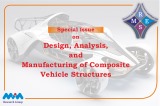Review Article
Approaches considering non-linearity in soil-foundation-interaction: A State-of-the-Art Review
Vishal Kumar Mourya, Gaurav Pandey, Dhirendra Patel, Rajesh Kumar
Department of Civil Engineering, IIT (BHU) Varanasi, India
Keywords
Abstract
Continuum Modelling;
Beam-on-nonlinear Winkler Foundation model;
Macro Modelling;
Centrifuge Experiment;
1-g Test
Seismic excitation causes the soil to begin acting nonlinearly at higher strain. Hence, the nonlinearity of the soil, foundation, and structure should be appropriately considered. This can be achieved by proper modelling of soil-structure-foundation interaction (SSI). The continuum, Winkler-based, and Macroelement models are the major modelling techniques for considering SSI. The continuum method involves determining absorbing boundaries, the size of the soil domain, soil element size, constitutive soil model, and soil structure interface. In contrast, the Winkler-based model uses nonlinear spring and dashpot to represent inelastic behaviour and energy dissipation properties of soil, respectively. Macroelement replaces the entire soil foundation arrangement with one element at the bottom of the superstructure. The trade-off between the advantageous effects of the SSI model, particularly in terms of energy dissipation, and its unfavourable effects, such as settling or tilting, should also be optimised during the analysis and design phases. The present paper aims to provide a concise review and comparative analysis of the several methodologies proposed by the researchers that consider the nonlinearity in soil-foundation-structure interaction (SSI). The importance of the study lies in the adoption of an approach that reduces computational effort and time. Moreover, the experimental works are also reviewed with regard to the soil structure interaction. It can be inferred from the current study that various approaches have some benefits and drawbacks; thus, these approaches can opt accordingly.
© 2023 MIM Research Group. All rights reserved.


